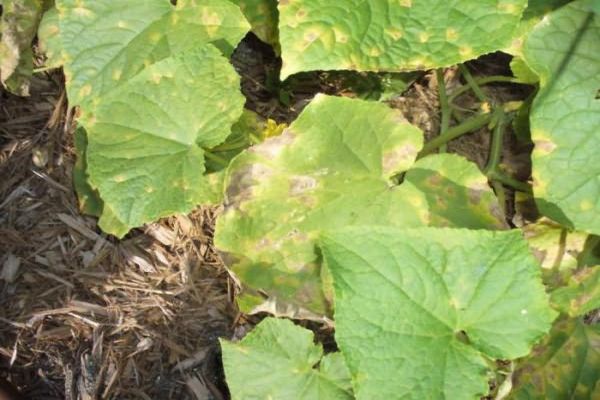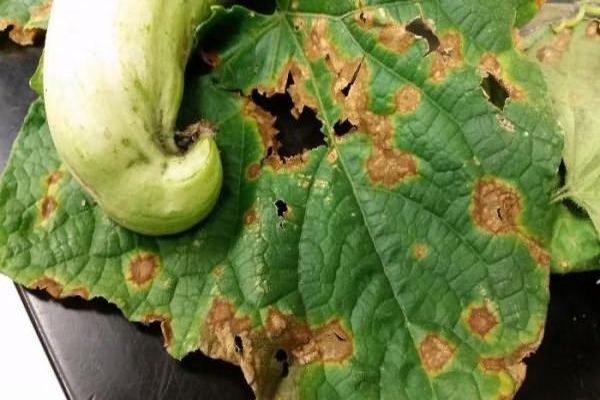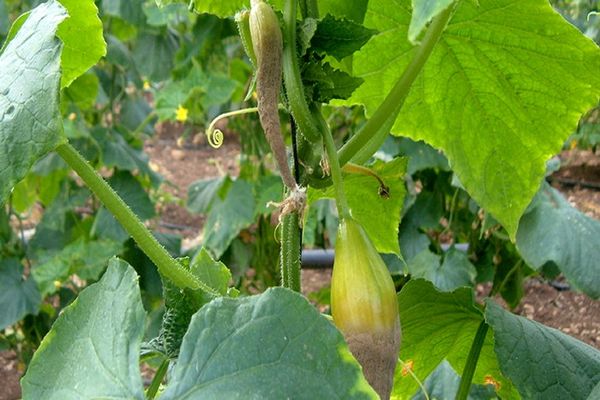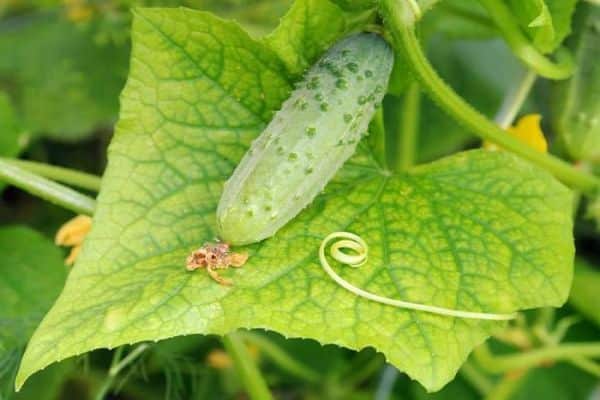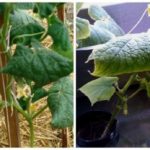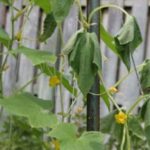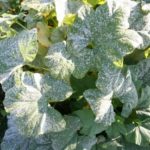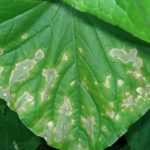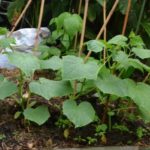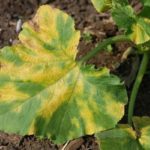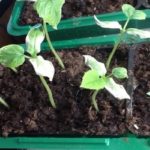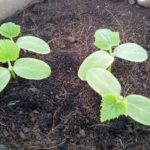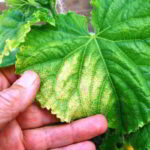You cannot ignore rusty spots on cucumber leaves. A cheerfully green cucumber bed can turn into a sad sight in a few days - goodbye to the dream of crispy cucumbers. Brown or dark yellow spots that appear on the leaves may be signs of sunburn. Burns are a common phenomenon, but you should not be afraid of them. The burned plants will move away and continue to grow, you just need to carefully water the bushes without getting water on the leaves. The danger is a fungal infection that causes rust on cucumbers.
Why are rusty spots visible on cucumber leaves?
Spores of various fungi are carried by the wind, accumulate on weed leaves, and live in the top layer of soil. A plant with strong immunity, with good care and a favorable microclimate, copes with infection.
Various factors weaken cucumbers:
- cold weather;
- frequent rains;
- lack of sunlight;
- difference between night and day temperatures.
Infection (bacteria, fungus, virus) under unfavorable conditions causes diseases, the symptom of which is brown spots on the leaves.
Let's consider several common diseases in open ground and greenhouses: cladosporiosis, downy mildew, anthracnose.
Diseases
Most plants infected with the fungus in the last stages of the disease are covered with dry, brown leaves. The first symptoms of almost all diseases appear on cucumbers as white, yellow, and brown spots on the leaves.
Let us consider only those diseases in which, due to rust on the leaves, the vines die, lag behind in development, and stop bearing fruit.
Cladosporiosis
Otherwise, this disease is called brown olive spot. The fungus affects almost all parts of the plant:
- leaves;
- whip;
- fruit.
At the initial stage, small red (olive) spots are visible on the leaves and stems. Over time, the spots darken, resemble a burn, and gradually holes form in their place. Spores settle on the fruits and brown dents form on them.
Cladosporiosis usually affects cucumber vines in August during sharp fluctuations in daily temperatures and during periods of prolonged rain.
Experienced gardeners offer the following scheme of action on how to get rid of emerging rust stains:
- The fungus reproduces better in a humid environment, so the first thing you need to do is stop watering the bushes.The pause in watering should last at least a week.
- At an average daily temperature of 15–16 °C, cover the cucumber bed with spunbond or other covering material at night, and remove the cover during the day.
- Treat plants against fungus.
Treat the bushes with one of the following preparations:
- Bordeaux mixture, concentration 1%;
- copper oxychloride, solution 0.4%;
- “Oxychom” in the amount of 20 g per 10 liter bucket, the water should be warm.
Downy mildew
More often this disease of cucumbers is called downy mildew. Yellow spots form on the surface of the leaves, their size grows every day, the color of the spots changes from dark yellow to red. Leaves affected by the fungus wither and dry out. The bushes may die.
How to deal with the problem? If you notice signs of downy mildew, you need to temporarily stop fertilizing and watering. Treat leaves and stems against fungal infection without waiting for it to spread to other plants. Drugs used for treatment:
- copper oxychloride;
- Bordeaux mixture;
- "Ridomil";
- "Ordan".
In open ground, cover the treated plants with film (covering fabric) overnight; in the greenhouse, raise the night temperature to 16 °C.
Anthracnose
Anthracnose is popularly called copperhead. The appearance of rusty spots on the leaves signals the onset of the disease. The symptoms are recognizable - a plant infected with anthracnose is easy to recognize:
- multiple brown spots on the leaves that appear to be burned;
- dry leaves;
- brown cankers on fruits.
Gardeners consider contaminated seed material to be the main cause of the disease. Anthracnose spreads when seeds are collected from diseased plants. The main factor leading to anthracnose is watering with cold water.
Treatment alone will not be enough.For the first time, use Bordeaux mixture (1%) to eliminate the causes. All damaged parts of the plant are regularly removed and sprayed with copper sulfate (0.5%). We save ourselves from anthracnose in different ways. It is acceptable to use home recipes for fungal diseases.
How to treat a diseased plant? It is better to prepare working onion solution in an enamel or iron bucket. For infusion you need hot water. For a 10 liter bucket of water you will need 2 tbsp. l. (50 g) chopped onion peels. Bring a bucket of water and onion skins to a boil and remove from heat. The working solution should be prepared within a week. One cucumber bush will require 1 liter of liquid fertilizer. If home control measures are ineffective, resort to the help of a fungicide.
Prevention
Knowing why rust appears on cucumbers, you can take measures to eliminate these prerequisites by fighting the fungus in advance. Start prevention from the first stage - sowing seeds. Protect the seeds from fungus with a manganese solution. Soak them in the pink solution for at least 15 minutes.
How to deal with the problem? Disinfect the planting substrate when propagating bushes by seedlings:
- The first method is to warm the soil for 25 minutes at a temperature of 100 °C.
- The second way is to pour boiling water over it.
- The third way is to pour Fitosporin.
Further preventive measures concern the vegetable garden (greenhouse). Rotate crops in the garden. Do not plant the crop in one place. The bad predecessors of cucumber are zucchini and pumpkin; after them, pathogens that are dangerous to cucumbers accumulate in the soil. In the fall, we get rid of leftover vegetables and weeds in the garden. 2 weeks before planting, water the beds with Fungicide or a pink solution of manganese.
We treat the plantings during growth and flowering of the crop with Bordeaux mixture at least 4 times. We remove the cucumber leaves with rust and lubricate the cut with a solution of copper sulfate.
Crop loss from rust can be significant - up to 30%. But now we know what to do as soon as signs of pathology appear: we begin to urgently treat the diseased plant.

